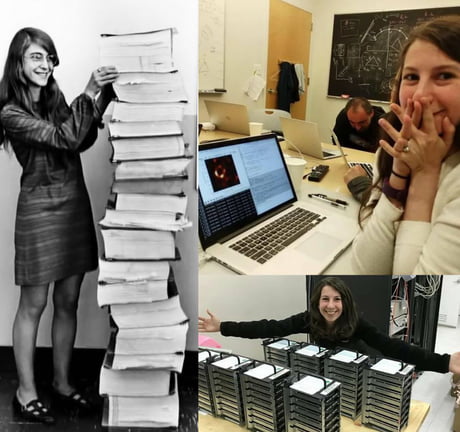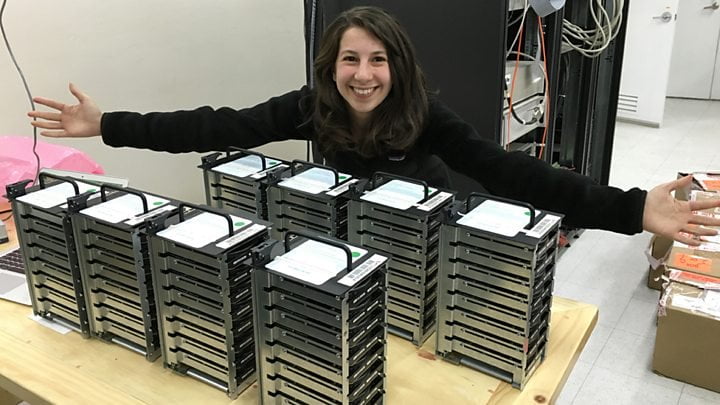This Thursday, the world beheld the spectacular first-ever image of the luminous halo surrounding a black hole. The far-fetched (pun intended) picture of an entity 500 million trillion kilometres away from Earth, could only be realised via advanced computing-aided reconstruction, which required an unprecedented and intricate algorithm. But it was human-suitable conversion by an ingeniously-designed elaborate computer program that enabled humanity to envision what would’ve otherwise been an incomprehensible garble of humongous data. The image captured popular imagination of millions, finding a precedent of spectacle, only in the famed ‘Earthrise’. The simultaneously awe-inspiring, reinvigorating, and humbling image, puts us into perspective, and is a testimony to curiosity, prowess, and perseverance of endeavour that characterises our civilisation.

Black holes are superdense cosmic objects, which are the ultimate culmination of massive stellar matter collapsing unto itself, by virtue of its own superintense gravitation. Its gravitation is subsequently so potent, that beyond its imaginary boundary, nothing, not even light or any radiation, the fastest entity in the entire universe, can escape it, making them notoriously difficult to detect. The one pictured was a typical, supermassive one, whose size rivals that of our solar system’s.
In order to coordinate and stitch the seemingly-incoherent set of distinct recollections,
avante –garde computational techniques that dedicated computer scientists had been devising, were employed.
One telescope could never qualitatively suffice to capture the elusive, incomprehensibly remote, and obscure object. Hence, light emanating from the unfathomably, far-flung source, was captured by an array of numerous (8 to be precise) interferometry-equipped telescopes, sprawling the globe and in essence, converting the entire planet, into a giant lens, each individual telescope acting as facets of this “compound eye”. However, this delocalisation, also appropriated supervision, analogically warranted an “ocular-lobe of brain”, to make sense of this sparse, diffused and haphazard mound of data, akin to how our brain processes raw image incident on our eyes. In order to coordinate and stitch together this seemingly-incoherent set of distinct recollections, avante-garde computational techniques, that dedicated computer scientists had been devising, were employed.
Also read: Nishanti Sudhakar On How Gender Bias Begins At Home | #DesiSTEMinist
The data they captured was stored on hundreds of hard drives that were flown to central processing centres in Boston, US, and Bonn, Germany.
The said image, captured by the Event Horizon Telescope (EHT) – a network of eight remotely-interlinked telescopes – was rendered by a novel algorithm, itself developed under a unilaterally dedicated team-effort comprising intimately-coordinating astrophysicists, mathematicians and cutting-edge software-developers. The devout ardour had been going on for the past few years.
At the Massachusetts Institute of Technology,
“Watching in disbelief as the first image I ever made of a black hole was in the process of being reconstructed,” she wrote in the caption to the Facebook post of the picture.
She started making the algorithm three years ago while she was a graduate student at the Massachusetts Institute of Technology (MIT). She’d also delivered a lucid TED talk on the subject of imaging (rendering) black holes, back in April 2017.
“We’re a melting pot of astronomers, physicists, mathematicians and engineers, and that’s what it took to achieve something once thought impossible,” Dr. Bouman, was quoted as having said, by the BBC, after the image’s release.
Several eminent scientists, including Nobel Laureates RK Pachauri and Sir Tim Hunt, have stood in testimony, in a variety of ways, to misogyny in scientific institutions, academia and research semblances.
Parallels of this voluminous, computational tour-de-force have frequently been drawn to another prominent seemingly insurmountable feat, that is, coding the ambitious trajectory of the Apollo-11 mission (whose successful execution is described as being analogous to striking a pinhead on the thickness-wise edge of paper), which landed the first human on the moon, a task itself deemed naive, foolhardy and even dare-devilish, by most contemporaries. The quantum leap for humanity was enacted thanks to the singlehanded efforts of pioneering software engineer Margaret Hamilton, who was also a computer scientist at MIT. She is pictured standing next to her stack of code above, on the left.

The abject gender disparity in STEM, has long been met with general media and administrative neglect, a lack of cognizance borderlining indifference and apathy, even in the First World, and has often been the subject of numerous, spontaneous attempts to be systematically misattributed to an intrinsic lack of scientific competency in women and casually mansplained. However, no biological basis for bias towards a certain discipline or in favour of a specific form of analytical competence in gender dimorphism, as such exists. Nonetheless, the aforementioned fad is quite statistically prevalent, even in first world nations.
Several eminent scientists, including Nobel Laureates RK Pachauri and Sir Tim Hunt, have stood in testimony, in a variety of ways, to misogyny in scientific institutions, academia and research semblances, ranging from blatant casual, everyday sexism to alarmingly commonplace sexual abuse and harassment.
Also read: Charusita Chakravarty: The Chemist Who Fought Sexism In STEM | #IndianWomenInHistory
An overwhelming worldwide media response from women, has emerged in response to the feat, being inspired, impelled, bolstered and emboldened by the pioneering woman behind this century’s most wondrous figment of discovery.
Featured Image Source: Ign
About the author(s)
Pitamber Kaushik is a columnist, journalist, writer and aspiring knowledge curator. He is a fervent environmentalist and identifies as Utopian Socialist.




